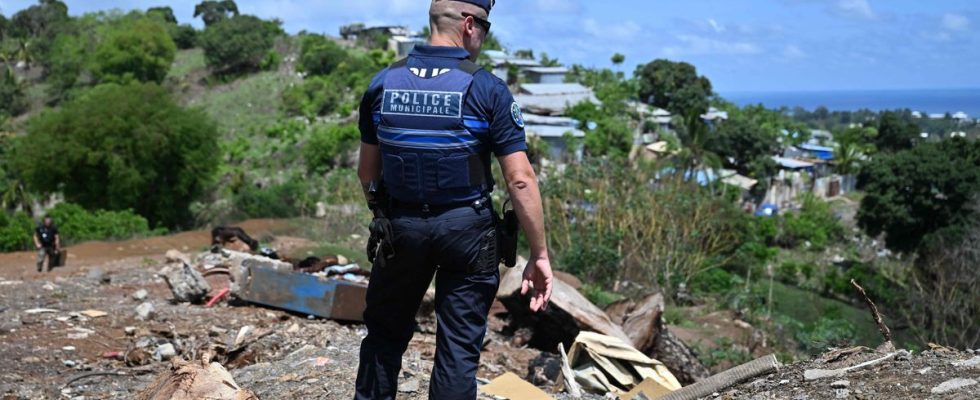Thanks to it, insecurity in Mayotte was to decline, illegal migrants to be expelled and shanty towns to be destroyed. Launched in the spring by the government, Operation Wuambushu did not have the expected results and the situation in the 101st department of France is more explosive than ever. Section by section, a look back at the results of this controversial operation which, according to the government, continues.
A resurgence of violence
Élisabeth Borne was able to see this. During his visit to Mayotte on December 8, his discussions with elected officials and residents always focused on insecurity. Since the Prime Minister’s visit, the situation has not calmed down, on the contrary. The death of a teenager killed by gunfire on December 10, that of a young man stabbed during clashes between gangs on the night of the 15th to the 16th and that Tuesday of another during a fight on the sidelines of a football match recalled that Wuambushu had failed to ease tensions in the poorest department in France.
As clashes between groups of young people from rival villages multiply, residents’ exasperation increases. After the caregivers, who demonstrated on December 14, a delegation of Mahorese elected officials marched on Monday, calling on the State “to take its responsibilities” and demanding the establishment of a state of emergency. Each time they were received by the prefecture but the solutions proposed were meager, they regret.
In his last official communication, on December 13, prefect Thierry Suquet recognized that “Mayotte is once again experiencing troubled and violent periods and times”, announcing police reinforcements promised by the Ministry of the Interior. According to the gendarmerie, a new squadron of 70 soldiers must come to reinforce the 350 gendarmes on site. “These eruptions of violence happen regularly,” confides Hervé Derache, territorial director of the national police in Mayotte, who is also asking for new reinforcements to support his 750 police officers.
No drastic drop in illegal immigration
If we only look at the figures, Wuambushu has not met its objectives in the fight against illegal immigration. However, this was the primary argument of the operation, Mayotte attracting thousands of migrants arriving by sea each year, mainly from the neighboring Comorian island of Anjouan. According to Matignon, 22,000 people had been expelled at the beginning of December to the Comoros in 2023, lower figures than the previous year during which, according to the sub-prefect in charge of illegal immigration, Frédéric Sautron, “25,380 people had been expelled ” of the territory.
A failure which can be explained by the chaotic beginnings of Operation Wuambushu. At the end of April, when nearly 2,000 gendarmes and police officers were already mobilized, Moroni refused for three weeks to welcome his nationals expelled by France. “The problem is diplomatic,” assures a police officer from the administrative detention center (CRA) who wished to remain anonymous. “We know very well that these people come back, sometimes under another identity,” he continued. “We apply the policy of numbers. But it’s no use, we have to find an agreement with the Comoros.”
No disappearance of slums
This was the other priority objective of Operation Wuambushu: to destroy the unsanitary bangas (huts) organized into shanty towns, which have multiplied in Mayotte and are sometimes threatened by landslides. “There will have been roughly 1,250 [destructions] by the end of the year,” the Minister of the Interior and Overseas Territories, Gérald Darmanin, swore in June during a visit to Mayotte.
There too, the beginnings were difficult, with the Mamoudzou judicial court blocking the planned evacuations. With the last huts destroyed, in Mtsamoudou (south-east) in November, only 700 bangas were destroyed. In 2021, “1,600 sheet metal huts had been destroyed,” recalls Daniel Gros, representative of the Human Rights League (LDH) in Mayotte, who adds that the department is hampered by a glaring lack of rehousing solutions. In total, “30% of housing in Mayotte is informal,” says Matignon. Notably because “displaced families, who find themselves on the street, inevitably rebuild elsewhere,” underlines Daniel Gros.

